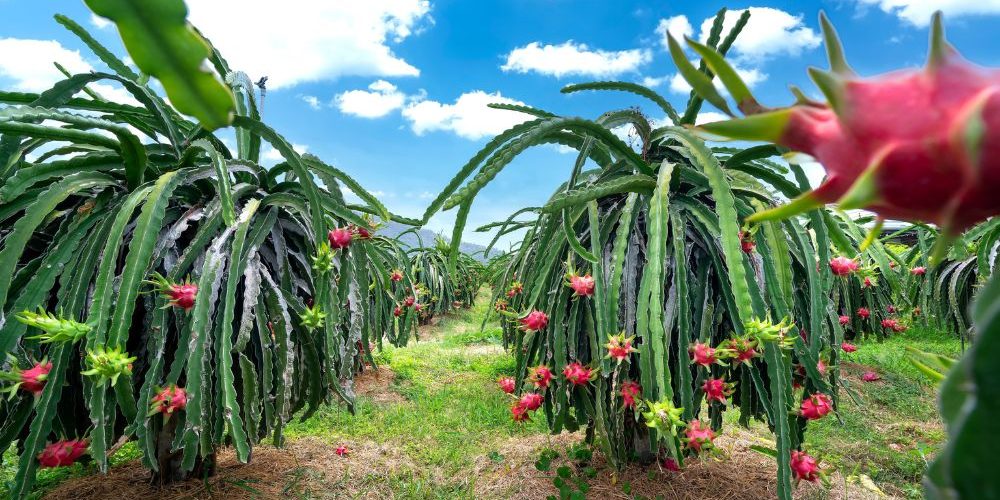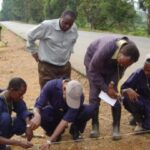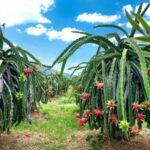Dragon fruit farming is quickly gaining traction in Kenya as farmers realize its potential for high returns. Despite its profitability, only a few farmers have embraced this venture, leaving a significant gap between supply and demand. Dragon fruit, also known as Pitaya or Strawberry Pear, is one of the highest-priced fruits in Kenya, retailing at about Ksh 900 per kilogram in local markets. This makes it an attractive option for farmers looking to diversify into high-value crops.
Why Dragon Fruit Farming Is Profitable
One of the key reasons dragon fruit farming is so lucrative is its high market demand and relatively low supply. The fruit is popular in upscale areas in Nairobi, including Westlands, Muthaiga, Karen, and Parklands, where a large number of Asian residents enjoy it as part of their diet. However, it’s not just limited to this niche market—dragon fruit is increasingly becoming popular for its health benefits, which has contributed to rising local demand.
Nutritional Benefits of Dragon Fruit
Dragon fruit is not only delicious but also packed with numerous health benefits, which further drives its demand. Some of its nutritional advantages include:
- Rich Source of Dietary Fiber: Aiding in digestion and promoting gut health.
- Cholesterol Reduction: It helps in lowering bad cholesterol levels in the body.
- Vitamin B3: Enhances skin appearance and smoothness, making it a popular choice for health-conscious individuals.
- Vitamin C and Calcium: It is also rich in vitamin C, which boosts immunity, and calcium, which is essential for bone health.
Ideal Ecological Conditions for Dragon Fruit Farming
Dragon fruit thrives in semi-arid areas, making it well-suited to many parts of Kenya. Some of the regions where dragon fruit farming is being practiced include Meru, Machakos, Laikipia, Naivasha, and Makueni.
The fruit does not require intensive irrigation, making it an excellent crop for farmers in dry areas. The optimal growing conditions include:
- Temperature Range: Between 20°C and 30°C.
- Rainfall: An annual rainfall of 40-60mm is ideal, although the plant can tolerate lower rainfall due to its ability to survive with minimal water.
- Soil: Dragon fruit grows well in almost any type of soil, as long as it is well-drained. Waterlogged soils can cause root rot, so ensuring good drainage is crucial.
- Support Structures: Since dragon fruit plants are vines, they require support structures like trellises or poles to help them grow upright.
Harvesting Dragon Fruit
Dragon fruit typically matures in six to nine months when grown from cuttings, while plants grown from seeds may take longer—up to two years. The fruit starts as green but turns bright red or yellow when it reaches maturity, signaling it’s ready for harvest. One advantage of dragon fruit is that it is not highly perishable, meaning it can last for several weeks after harvest without significant loss in quality. This makes it easier to transport and store, further enhancing its profitability for farmers.
Dragon Fruit Market in Kenya
Although the demand for dragon fruit is high, particularly in upmarket areas of Nairobi, the supply remains low. As a result, farmers who invest in dragon fruit farming stand to gain from a ready and profitable market. In addition to the local demand, there is potential for export markets, especially in countries where dragon fruit is a staple part of the diet, such as China, Vietnam, and Thailand.
Dragon fruit farming also holds potential for Kenyan farmers looking to tap into the growing global market for exotic fruits. With its rising popularity due to its health benefits, dragon fruit is likely to see an increase in demand both locally and internationally.
Key Challenges in Dragon Fruit Farming
While the market for dragon fruit is promising, Kenyan farmers face some challenges that need to be addressed:
- Lack of Awareness: Few farmers are aware of the benefits of dragon fruit farming, leading to limited adoption.
- High Initial Costs: Setting up a dragon fruit farm requires a significant initial investment, particularly in erecting support structures for the vines.
- Limited Technical Knowledge: Many farmers may not be familiar with the best farming practices for dragon fruit, making it essential to provide technical training and support.
Dragon fruit farming in Kenya presents a highly profitable opportunity, especially for farmers in semi-arid regions where other crops may not perform well. With its increasing demand in both local and international markets, coupled with its health benefits, dragon fruit farming could be the next big thing in Kenya’s agricultural sector. Farmers looking to venture into high-value crops should consider dragon fruit as a viable option, but they will need to invest in proper farming techniques and marketing strategies to fully reap the benefits.





